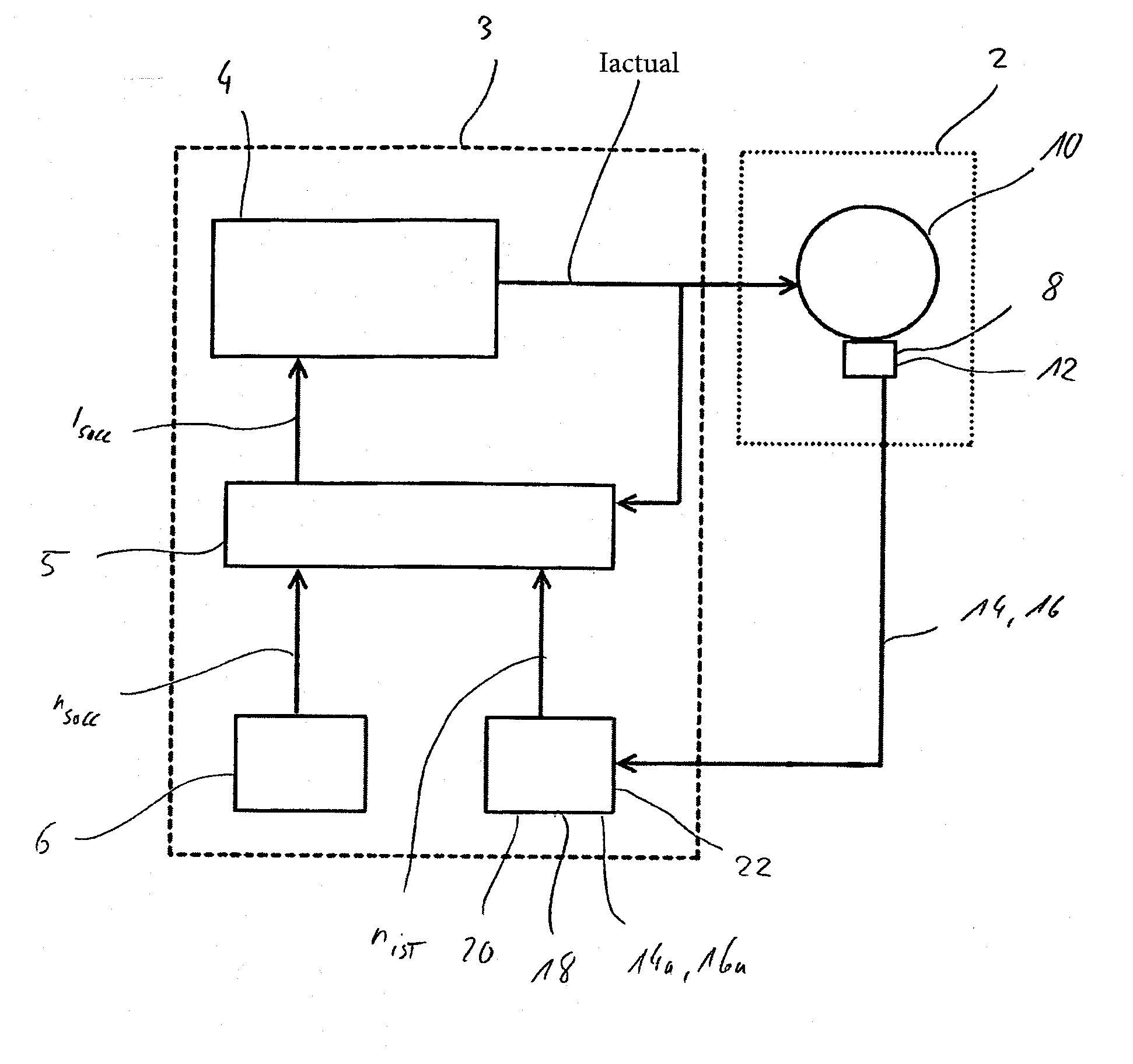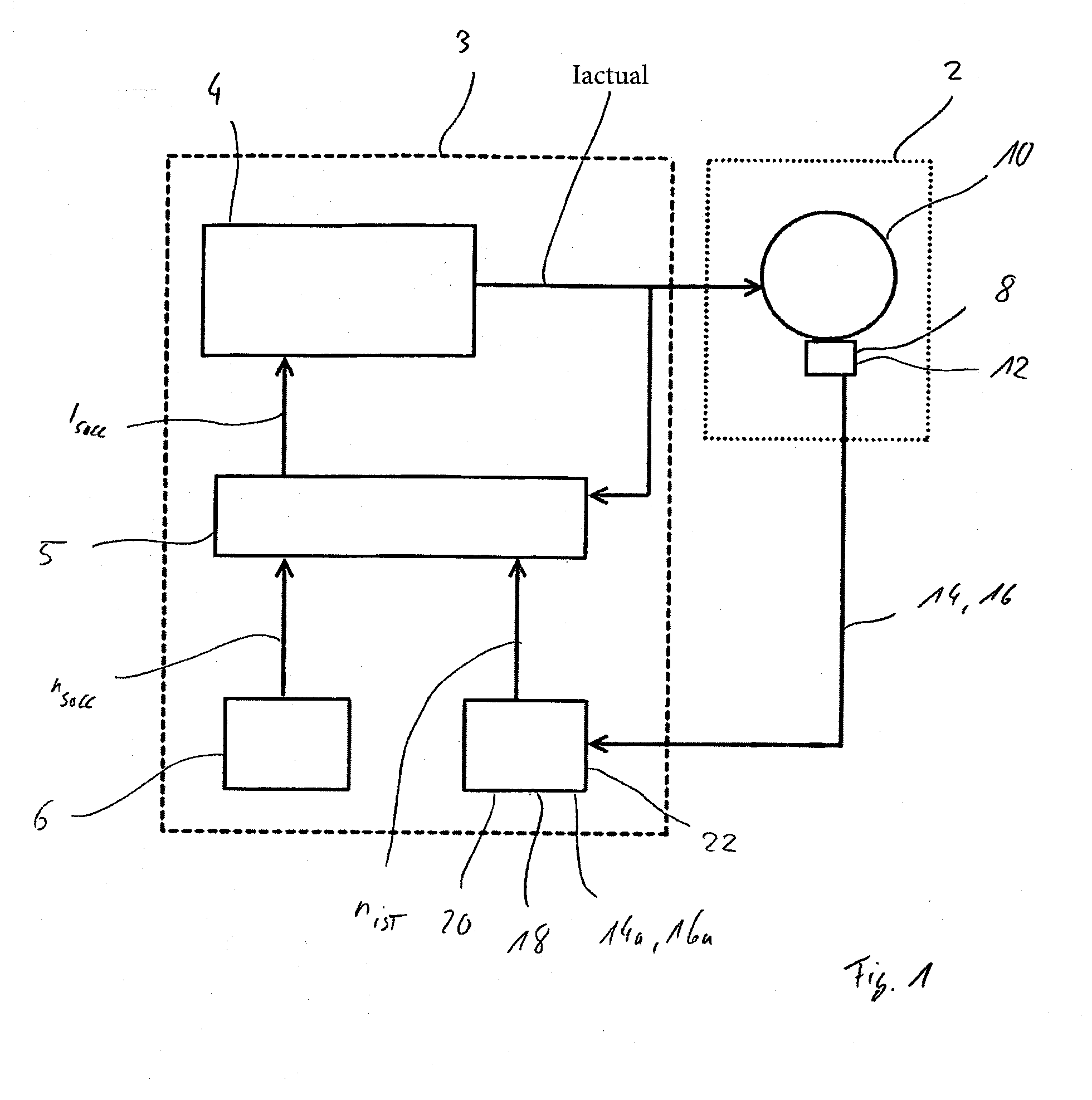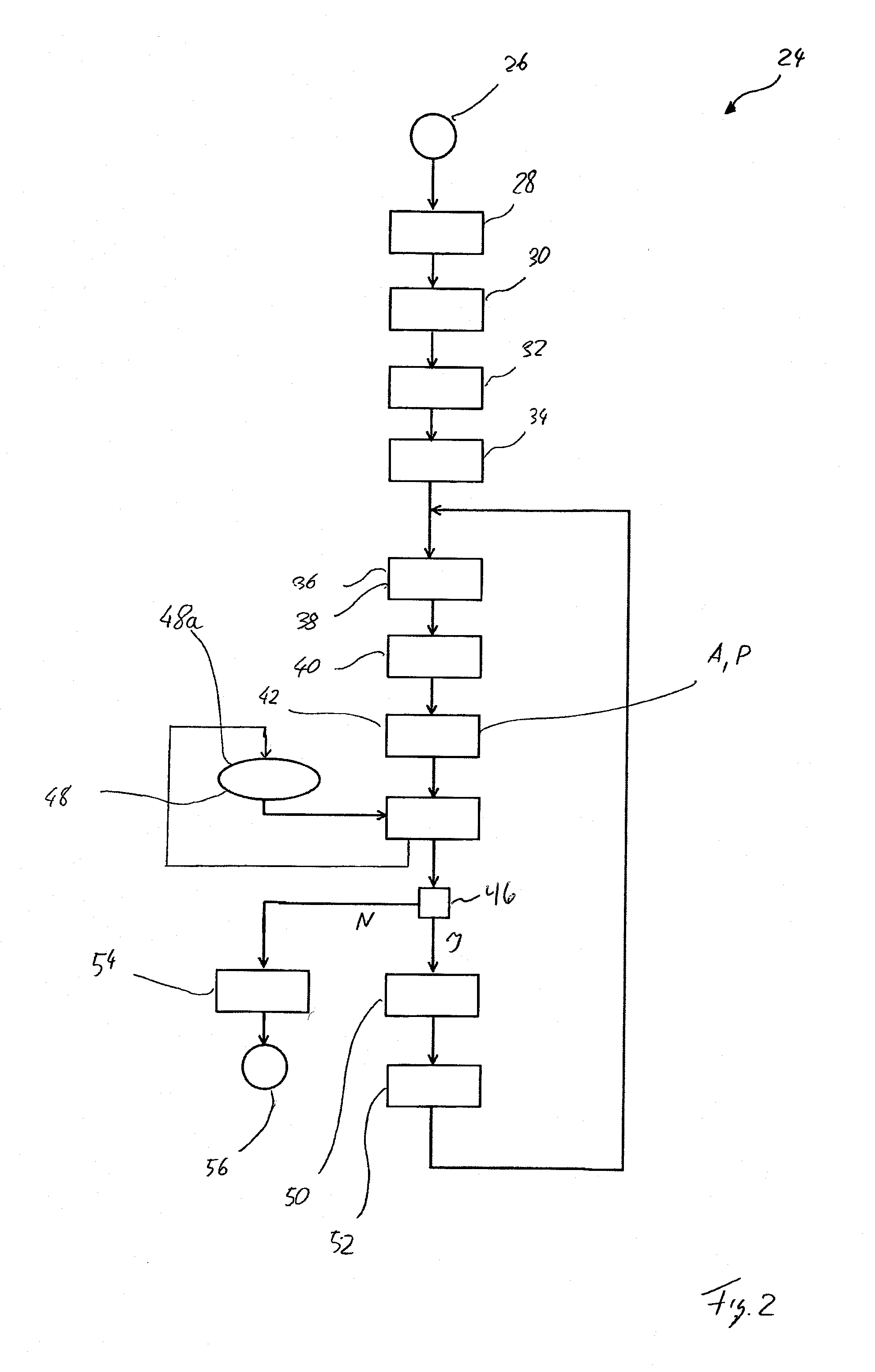Method for calibrating a rotary encoder
a rotary encoder and encoder technology, applied in the direction of speed/acceleration/shock measurement, instruments, material analysis, etc., can solve the problems that the tracks provided by the two sensors do not correspond to the optimal sine or cosine function, and achieve the effect of improving the angular resolution of the electric machin
- Summary
- Abstract
- Description
- Claims
- Application Information
AI Technical Summary
Benefits of technology
Problems solved by technology
Method used
Image
Examples
Embodiment Construction
[0038]An electric motor 2, which is supplied by means of a converter 3 with a three-phase alternating current Iactual, is shown schematically in FIG. 1. Converter 3 itself is driven by means of a current controller 4 and a rotational speed controller 5, which is supplied both with the value of the alternating current Iactual and a current rotational speed nactual of electric motor 2 and a specific speed ntarget. A target current Itarget is calculated from these data and sent to current controller 4, according to whose specifications current valves (not shown) of converter 3 are operated. The specific speed ntarget in this case is preset, depending on the requirements for electric motor 2, by means of a target value setting unit 6 but also if a calibration of electric motor 2 is started.
[0039]The current rotational speed nactual is determined via an incremental encoder 8 operating according to a photoelectric principle, which is flange-mounted on the B-side on a shaft of a rotor / stat...
PUM
 Login to View More
Login to View More Abstract
Description
Claims
Application Information
 Login to View More
Login to View More - R&D
- Intellectual Property
- Life Sciences
- Materials
- Tech Scout
- Unparalleled Data Quality
- Higher Quality Content
- 60% Fewer Hallucinations
Browse by: Latest US Patents, China's latest patents, Technical Efficacy Thesaurus, Application Domain, Technology Topic, Popular Technical Reports.
© 2025 PatSnap. All rights reserved.Legal|Privacy policy|Modern Slavery Act Transparency Statement|Sitemap|About US| Contact US: help@patsnap.com



